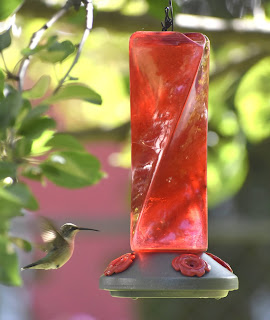- A broad range of professions and pursuits relies on the creative process. The scientist, the entrepreneur, the photographer, the coach: Each relies on the ability to notice that which previously seemed invisible to everybody else.
- What are the colors that you become aware of first?
- What are the colors that reveal themselves more slowly?
- What colors do you observe that you did not expect?
- What color relationships do you notice?
- Do colors appear to change over time?
- Start a collection (e.g., search images to hunt and document: arrows, public clocks, manhole covers, geometric shapes, specific architectural details, footprints, signs and objects prohibiting specific behaviors)
- Count with the numbers you find. The game is to find unexpected shapes, sizes, and contexts. Start at 1 and work your way up or start with 100 count down.
- Document the (seemingly) identical - a developed named Jacob Harris regularly takes pictures of blue cloudless sky - near-identical squares of blue. He calls the series "Sky Gradients." Other ideas - sidewalks, parking lots, grass, tree trunks - both human-made features and natural ones offer endless possibilities.
- Look slowly. An example is Slow Art Day. Look at five works of art for ten minutes each, and then meet together with someone over lunch to talk about the experience. The Metropolitan Museum of Art in New York concluded that its patrons spend a median 17 seconds in front of any given painting.
- Look up and then look farther up - this means slowing way down or stopping moving altogether.
- Repeat your point of view - occupy the same spot for 15 minutes every day and study passersby.
- Look out a window - spend 10 minutes looking out the window you most persistently ignore.
- Reframe the familiar - make a Polaroid-size frame, acrylic with a dry-erase surface - like portable windows. Hold the frame up to an object or scene and write a one- to two-word description on it (e.g., beautiful, vacant, cloudy). Then shift the frame to focus on a different subject, leaving the original description. How does the earlier description influence what you're looking at?
- Cover 4'33" - John Cage composition in 1952 involved a 4'33" "song" of no music. Set the timer on your phone for 4 minutes and 33 seconds. Set it to vibrate or chime, place it somewhere screen-down, and don't watch the clock tick. Close your eyes and just listen.
- Make an auditory inventory - collect sounds and write down what they are.
- Digital silence - observe a week of digital silence.
- Stand - "Standing with Saguaros" project - stand for an hour in the proximity of one of the cacti there. You can also sit. Adapt to your area. Pick one thing and really attend to it for an hour.
- Spend a day of traveling your hometown without spending a dime. See what happens when you take money out of the equation. How does it change where you move, what you look for, how you orient yourself.
- Play Big-Box Archaeologist - look for and document products you couldn't dream up if you tried as you go through a big-box store. What is the most absurb product you will see? The most poetic? The saddest? The one most revealing of 21st century America? The funniest?
- Read the plaque - read public plaques. They often tell fascinating stories hidden in plain sight. See readtheplaque.com for examples.
- Apply the SLANT method: Sit up, Lean forward, Ask and answer questions, Nod your head, and Track the speaker.
- Ask five questions, give five compliments - this requires an alert attentiveness toward other people and what they're saying.
- Find something to complain about - without complaining, there can be no progress. The trick is to treat negativity as a means, not an end.
- Meet a friend halfway - pick a friend and calculate the exact geographic midpoint between where the two of you live. See geomidpoint.com.
- Be alone in public - it's not a penalty to spend time alone. It's an opportunity - to exist totally free of anyone else's expectations or your smartphone.
- Care for something. Caring is at the very heart of it all. These exercises help you decide what you want to care about - and thus what and whom you want to care for and attend to.











1 comment:
Sounds like an interesting book with a lot of great ideas! :)
Post a Comment